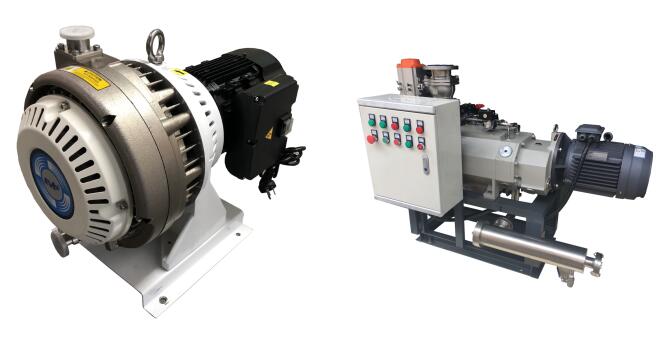dry vacuum pump type selection
In the process of using the dry vacuum pump, choosing the right type of equipment can effectively solve the two major problems of the vacuum pump equipment. One is that the working medium return flow of the pump pollutes the pumped container, which has an impact on the product quality, quantity and maintenance cost, so the selection of the model is very important.
Due to some reaction substances in the process, the medium in the vacuum pump is seriously deteriorated, so that the pump can not work normally. Our company has complete product models, which can be roughly divided into:
1. BICIRCULAR lobes. Its design is very similar to the roots pump which is popular and widely used at present. In fact, some early dry pump design ideas were to add Roots pumps. This multi-stage design makes the gas path quite complex, and each and every one needs a large flow of nitrogen to play a role of dilution and isolation. At the same time, in order to achieve a good vacuum, there are very strict requirements for the gap at all levels. Of course, due to the increase of internal compression ratio, the power consumption of this design is relatively low.
2. Internal compression screw type. In addition to the use of a pair of non equidistant screws, the basic principles of internal compression screw design and external compression screw design are very similar. The reduction of the volume between the screws makes the internal compression. This design reduces the power consumption to the same level as multistage pump due to internal compression. However, in many processes, this internal compression, like the multi-stage pump, is very easy to cause the physical and chemical changes of the gas in the pump body and produce solidification or liquefaction.

3. Combined (roots + claws). Roots is designed to improve the extraction efficiency under low pressure and claw is designed to improve the extraction efficiency under high pressure. Its basic principle and gas path are exactly the same as the circular lobe design introduced earlier. Some manufacturers change the last layer to star design, which can divide the gas into five parts in one revolution, just like the three circle split design can divide it into three parts. Similarly, in many processes, each layer of combined design needs a large flow of nitrogen to play a role of dilution and isolation.
4. 3-lobed. The design principle of the dry vacuum pump is the same as that of the double round split design, except that the gas is divided into three parts in one revolution instead of two parts like the double round split design. The two designs have the same advantages and disadvantages. In order to further reduce the power consumption, some manufacturers in the transmission part choose two DC motors, but this will also lead to reduced torque and reduced restart capacity. As with the double round split design, each layer of the three leaf round split design needs a large flow of nitrogen to play the role of dilution and isolation.
5. External compression screw type. Use a pair of isometric screws. This reduces the internal compression and makes the gas path feel shorter. In this way, the gas stays in the dry vacuum pump for a short time. Although the power consumption of this design is relatively high due to the reduction of internal compression ratio, it shows high stability in many complex semiconductor processes. This single-stage design makes the demand for nitrogen consumption very small and simple, so that it has good interchangeability in different processes. In many clean processes, nitrogen may not even be used.
With the increase of the application of dry vacuum pump, in order to meet the application needs of the enterprise, the manufacturer divides it into these types. Through the detailed introduction above, the equipment can be selected according to their own use needs.
(The article comes from the Internet. If reprinting is not allowed, please contact our company to delete it.)
